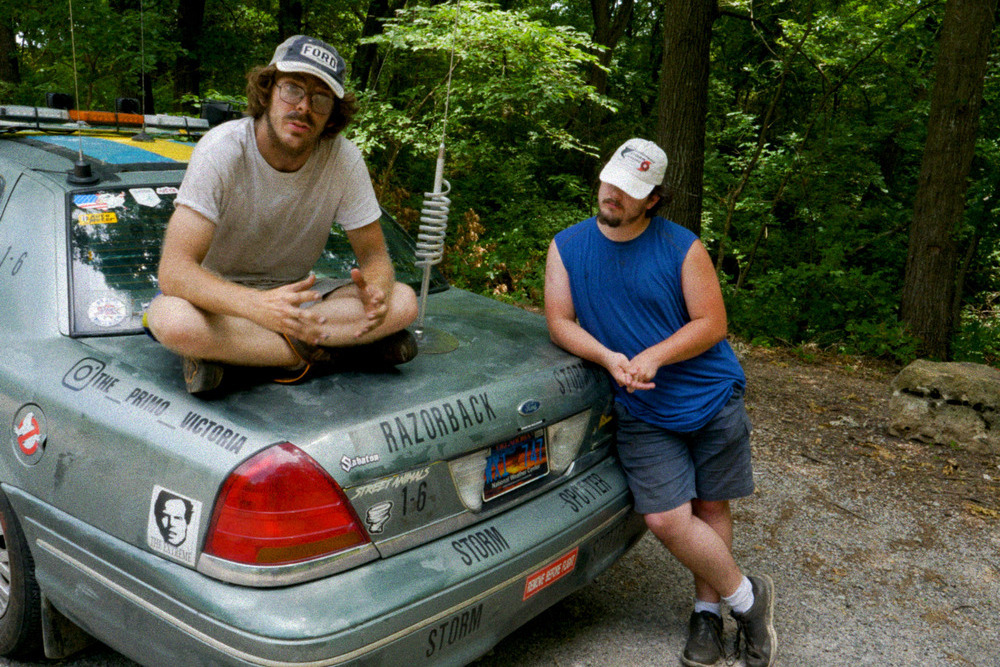From Dorothy’s house in 1939, “The Wizard of Oz” got stuck in a wild air storm and was running a threat to the “Twister” of 1996 till Helen Hunt and Bill Pasteon, the tornado has long allowed American screen culture. With the “A Brief History of Chasing Storms”, filmmaker Curtis Miller combines this tradition with a comprehensive study of the iconic event.
Premier at Swiss Documentary Festival Vision du reelMiller’s film investigates mythology around the tornado in a street film, known as the area of American midwests as “Tornar Galli”. Through visiting several cities in the region and speaking with its tornado-creating residents, the filmmaker detects the history of the country in parallel with the weather conditions. Speak with Diversity Next to the world premiere, Miller recalls that there was always interested in tornado, thanks to the hurricanes for growing up in an area of Oklahoma.
“I was interested in the way I have a unique visual history in the tornado,” the director says. “They are highly documented and very photogenic, so I was often thinking about this relationship and in 2021, after the epidemic, I spent visiting the site for about three weeks and spent research.
One of the major things leading to Miller to pursue the project, had the potential to broadcast the wide historical questions on the creation of the United States from the point of jumping of the tornado. “Such a topic expects the audience to take into account the implications of colonialism and housing isolation,” says the director. “History is interconnected and dirty. Woodward, in Oklahoma, there were huge, vivid murals showing the past of the region in the Cheroki strip. Those land runs were recently resumed by high schools as part of this founder myth.”

Matt and his storm-pull car, courtesy of Curtis Miller
Of course, there is also the ability to detect relationships between tornado and pop culture, although Miller says that at the time he started working on “a brief history of chasing storms”, he did not know about the sequel to Lee Isaac Chung’s 1996 blockbuster, “”Twisters“However, there is a coincidence that units both films: Matt, The Storm Chaser, depicted in Miller’s documentary, chasing his prestigious storm for the production of Chung.
“There is a dialogue scene in a motal, where you can see his car very briefly, and Matt is very proud of him. I think he is actually more excited about a few seconds on the film on the film that he has, which he has.”
There was a point where the director thought of the possibility of making a film about the culture of the storm, but he realized that “a lot had already been discovered.” Whatever he found attractive, he was hearing more about how films like “Twister” and “Wizard of Oz” have come to shape and influence the Hurricane-Paiva community.
“During my research, I learned about the role of these popular films in Storm Chaser’s original stories,” Miller explains. “These are people who dedicate their lives and see that it reflects them back in a Hollywood way, which they cherish. Culture was already present before the film, but ‘Twister’ thought of himself as the chasers of the storm. When I interviewed the chasers, they are one of those things when they work with ‘Twisters’.
In contrast, when studying the history of tornado, there is still a current feeling, taking into account the effects of global warming in especially in extreme weather. Miller, who grew up in an area, “where the tornado warning was very common,” now friends of many tamar areas of the country begins to be worried about climatic instability.
“People who come from an environment where weather patterns are less chaotic, now there are very legitimate concerns about increase in climate uncertainty,” filmmaker says. “One of the things I was interested in was how we will not only live within that structure, but how are people already doing? People in these areas already live under the climax, so how have they learned to live in this atmosphere?”
The directors cite the ongoing debate on whether the tornado street area is changing in the east. “There is a theory that storms are going to decrease often, but getting stronger. It is quite scary that the winds are currently measuring up to 300 mph. Very few buildings can survive this way. How do we prepare for such a future?”



